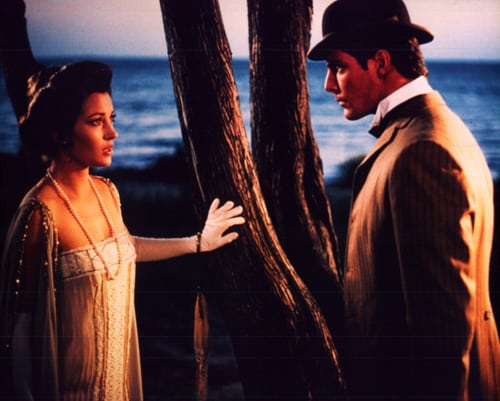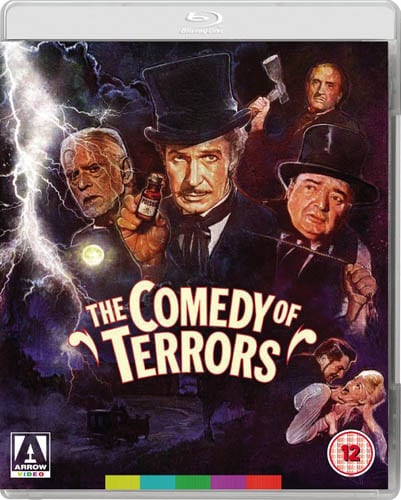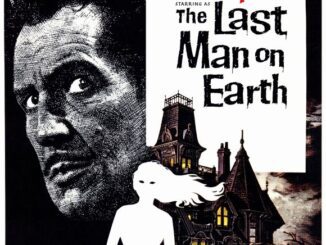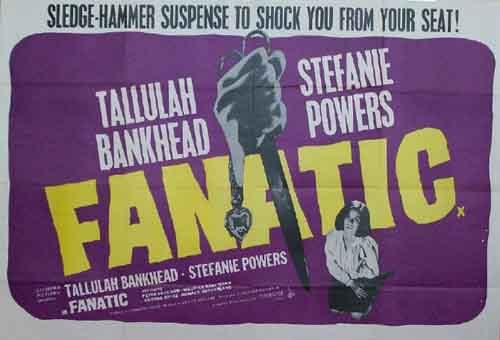Somewhere In Time (1980)
Directed by: Jeannot Szwarc
Written by: Richard Matheson
Starring: Christopher Plummer, Christopher Reeve, Jane Seymour, Teresa Wright
HCF REWIND NO.102. SOMEWHERE IN TIME [1980]
AVAILABLE ON DVD
RUNNING TIME: 103 mins
In May 1972, college theatre student Richard Collier is celebrating the debut of a play he has written when he is approached by an elderly woman who places a pocket watch in his hand and pleads “come back to me”. Eight years later, Richard is a successful playwright living in Chicago, but has recently broken up with his girlfriend and is struggling with writer’s block. Deciding to take a break, he travels out of town to Mackinac Island and the Grand Hotel, where he becomes enthralled by a photograph of a beautiful woman. He discovers that she is Elise McKenna, a famous early 20th century stage actress, and then that she was the aged woman who gave him the pocket watch eight years earlier. Discovering among her effects a book on time travel written by his old college professor, Dr. Gerard Finney, and learning from Finney himself that is possible to self-hypnotise one’s self to go back in time, Richard decides to travel back to 1912 to meet Elise……
Though it isn’t that offbeat and is not at all controversial, Somewhere In Time is otherwise actually one of the best examples of a cult movie you can find. It was a failure with both the critics and the general public upon its cinema release, but a small number of people fell in love with the film, a group which grew and grew as it got shown on TV until in 1990 the International Network of Somewhere In Time Enthusiasts was formed, whose aims are to, according to them: honour the film, and those responsible for its creation, to inform members about all aspects of it, to enhance their appreciation of it, as well as to influence public and media perception of the film, to assure its recognition as the classic we know it to be. They still hold an annual Somewhere In Time weekend at the Grand Hotel where much of the film takes place, in which they dress up in 1912 garb and often cast and crew from the film attend. They even placed a permanent monument, a plaque on a stone on Mackinac Island near the Grand Hotel, to commemorate the first encounter of the film’s lovers. And yet, it still isn’t that well known. Sounds like a cult movie to me.
Well, count me in as one of those who love Somewhere In Time. It’s a deeply romantic fantasy about love being unbound by time or even death, telling us that true love cannot be stopped by linear time and space, that it cannot die and is indeed worth dying for, This might sound like schmaltzy nonsense, and I’ve lost count of the number of times I’ve felt sick watching a supposedly ‘romantic’ movie, but there’s something in Somewhere In Time that touches the soul of its fans, and I personally have a distinct weakness for the kind of love story that touches on the fantastic, the kind of thing that was often done really well in the old days with classics like The Ghost And Mrs Muir and Portrait Of Jennie. Aren’t we all searching for our soul mate, and, if we were able to, wouldn’t we all be willing to travel through time if we knew where this person was? It’s also a film filled with other beautiful concepts, such as being able to travel through time not on a special machine but by hypnotising one’s self. Yes, it saved money on special effects, of which there are hardly any in the movie, but the story as told just doesn’t need them.
It was based on Richard Matheson’s novel Bid Time Return, which was partly inspired by theatre actress Maude Adams, who had a very over-protective manager much like Elise in the book and film. Matheson never met her in real life, only saw her portrait in Piper’s Opera House Opera House in Virginia City, Nevada and fantasised what it would be like to go back in time and meet her. The writer adapted his own novel for the screen. He simplified many things, to the point of leaving certain aspects unexplained, but more importantly he removed the dark element of the book, which had Richard suffering from a brain tumour and possibly fantasising all his time travel. Christopher Reeve’s agent laughed at the meagre salary he was offered for the part just after Superman: The Movie, so the producer slipped the star the script secretly. As for Jane Seymour, she got the part because, out of all the actresses auditioned, she was the only one who said she had never been in love before. The director was Jeannot Schwarz, who had just had a big hit with Jaws 2, but despite having its budget cut virtually in half, it failed to make any money, not helped by an actor’s strike going at the time which meant the cast could not promote it, something Reeve and Seymour later regretted. Interestingly the film shares many parallels with the much later Titanic, and we all know how successful that was.
The film opens in enticingly mysterious fashion with the old lady turning up at the party and giving Richard the watch. We see her being driven to her home near the Grand Hotel, where she sits in a chair, puts on a piece of music, a piece that will become significant, and is instantly recognisable to classical music fans as Rachmaninov’s Rhapsody on a Theme of Paganini Op. 43, Variation XVIII. The lady seemingly dies, looking out of the window [this scene was more elaborate in the original cut]. We cut to eight years later, and to Richard looking out of the window, linking the old lady and the young man together though we don’t really know why. Richard goes to the hotel, wanting a break but obviously drawn to it, and we have the first of four strikingly beautiful scenes that exist in the movie where Richard is drawn to the portrait of Elise, the picture being bathed in bright light, while the Paganini theme plays again. He goes to bed but can’t sleep, so returns to the picture. This time, we hear John Barry’s theme for the first time, telling us that Richard is in love.
Somewhere In Time moves a at very leisurely pace, especially for the next twenty minutes or so, which detail Richard investigating Elise, the possibility of going back in time, and his attempts to do so, and yet there isn’t any scene that is gratuitous; they all move the story along at its rightful speed and increase the inexorable sense of mystery, of a world that exists beyond our dreadfully logical, scientific one, and of true love waiting. Richard’s eventual time travel is indicated in the second beautiful scene, where we just focus on his face, which falls into a sleep and a relaxed smile as he is bathed in subtly changing light, the music, which up to now had been quietly suspenseful, reaching a calming climax. Then, after making his way, with great difficulty, through and out the door of the hotel in 1912, we have the third scene, which is the most beautiful one of them all. Richard sees a shutter being pulled up, and the window just about revealing a group of trees and Elise walking amongst them, then, after a few seconds, Richard walking slowly towards Elise. The theme music begins to play again, this time slightly faster and more developed, as we cut to the actual location and Elise sees Richard with a mixture of surprise and recognition. The only words spoken: “Is it you?”, from Elise. Cinematographer Isidore Markofsky bathes the scene in gorgeous autumnal shades as the sun is starting to set. It’s possibly the most romantic ‘first meeting’ scene ever put on screen.
After this I have to admit the film slumps just a little and is less interesting for a while. There is some fine ‘fish out of water’ stuff from Reeve, who demonstrates the same beguiling awkwardness he had done so well as Clark Kent, which include some decent chuckles, and some very sweet moments with a little boy who he had already met as an old man in the present day. The past gleams, sometimes in soft-focus, and really feels rose-tinted, which it probably wouldn’t be if you were actually in it, but you really want to be there whilst watching the film. This part of the film almost gets a little bogged down in its odd triangle involving Richard, Elise and her Svengali-like manager, a character who we never really understand, while the actual romance of Richard and Elise, paradoxically, seems slightly rushed. A fair bit of material was cut out here, and fans have dreamed about seeing it, and the other cut footage [Teresa Wright’s role earlier on was cut down too], but sadly it was all lost. There are reports of TV versions that have re-edited the film so that Richard travels back in time twice.
In any case we soon get to the film’s fourth beautiful scene, where Elise recites an impromptu monologue while performing in a play Richard is watching. Such a more touching declaration of love is hard to find. Of course it all climaxes with heartbreak in a final few minutes that usually cause the tears to flow. The ending, which James Cameron must have been inspired by but is possibly more moving here because of its simplicity, is either happy or sad depending which way you look at it, though it’s possible to look at the story from a more cynical point of view and say that Richard actually ruined Elisa’s life. This is I believe one of the things that makes it a great film; there are different ways of looking at what happens. There are a few unexplained things in the film; for example, it’s never made clear how Elise’s manager knows that a man will try to take her away, and indeed how much he knows [this is more explained in the novel]. All the events seem to be caught up in a revolving time loop like The Terminator, but the watch that is passed back and forth through time may never have actually been built and seems to just exist, eternally. I love tying my brain in knots thinking about this kind of stuff, which is why I like time travel films in general, but of course the majority of the film’s fans enjoy the film most as the most idealistic kind of love story.
Director Jeannot Schwarz, a man who didn’t make many films but whose work I’ve always enjoyed, perfectly steers the film to its weepy conclusion, along the way giving us many gorgeous and even clever shots [look out for a great use of the split-diopter lense which shows us background as detailed as the foreground] that really show what an underappreciated and underused filmmaker he was. Barry’s music, the album being his best selling, is an essential ingredient in the film, gradually having its achingly romantic main theme take over the score, but also containing other great bits and pieces like the old lady’s motif for violin near the beginning of the picture. I’m so glad he made the decision not to use, as was originally proposed, the 3rd Movement of Mahler’s 5th Symphony and replaced it with the Rachmaninov, because I associate that piece with Death In Venice so much it would have tarnished Somewhere In Time somewhat for me. It remains a rather wonderful picture that, even if you’re a cynic or just don’t like this type of film, I recommend giving a go. You may end up falling in love with it.
Rating: 


















Be the first to comment